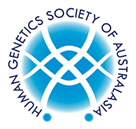Poster Guidelines
Posters will be on display from 0900hrs Thursday 9 May to 1530hrs Friday 10 May 2024. You are requested to hang your poster by 0900hrs on Thursday 9 May 2024.
Presenters are expected to stand by their poster during the lunch breaks on both Thursday and Friday, if possible.
The poster should be self-explanatory so that you are free to supplement and discuss particular points raised by viewers. Remember that your material/illustrations will be viewed from distances of one metre or more. Lettering should be as large as possible and preferably in bold type.
SIMPLICITY is the key:
- brief captions
- tables that are few in number but clear
- succinct text
Posterboard Size
- Each poster is limited in size to 1186 high x 900 wide (millimetres) and portrait orientation is required. Nothing larger can be accommodated.
- Poster boards will be Velcro compatible.
Abstract Publication
Please note that acceptance of your abstract is taken as confirmation of your agreement to have your abstract published in the Conference app.
Accepted abstracts will be formally published by Heart, Lung and Circulation.
By submitting this abstract, you are confirming that:
- ALL co-authors have been listed, with correct spelling, in the correct order for publication, and that their institutions/affiliations have been clearly identified, including the town/city, state, and country of institution.
- Within the publication, the presenting co-author will be identified by underlining. (That is, the presenting co-author will not [necessarily] be listed first).
- For academic integrity, NO additional co-authors may be added AFTER submission. Further, mis-spellings in author names may not be able to be corrected after on-line publication.
Accepted abstracts will be published by Heart, Lung and Circulation.
- For formal academic publication, "structured" abstracts (IMRaD) are preferred, with relevant subheadings included.
- For Journal style for conventions re spelling, units and references, etc, please refer to Heart, Lung and Circulation's guide to authors (online at www.heartlungcirc.org); and/or previous ICCG meeting abstracts available at: https://www.heartlungcirc.org/issue/S1443-9506(22)X0006-1
Registration
All presenting authors (oral and poster) must register and pay to attend the Conference by 12 April 2024 to be included in the handbook. Please refer to your acceptance email for a link to be eligible for early bird rates.
Student Registration:
Students must submit a letter from their supervisor defining their student status and include a copy of their current student card when registering for the Conference.
Guide for Preparation of Posters
- INITIAL SKETCH. Plan your poster early. Focus your attention on a few key points. Try various styles of data presentation to achieve clarity and simplicity. Does the use of colour help? What needs to be expressed in words?
- ROUGH LAYOUT. Enlarge your best initial sketch, keeping the dimensions in proportion to the final poster. Ideally, the rough layout should be full size. Draw rough graphs and tables. This will give you an idea of proportions and balance.
- FINAL LAYOUT. The artwork is complete. The text and tables are typed but not necessarily enlarged to full size. Now ask - "Is the message clear? Do the important points stand out? Is there a balance between words and illustrations? Is the pathway through the poster clear?"
- BALANCE. The figures and tables ought to cover slightly more than 50% of the poster area. If you have only a few illustrations, make them large. Do not omit text, but keep it brief. The poster should be understandable without an oral explanation.
- TYPOGRAPHY. Avoid abbreviations, acronyms and jargon. Use a consistent type-style throughout. Use large type, for example, HELVETICA. A 22mm x 30mm sheet photo statically enlarged 50% makes the text readable from 1.5 metres.
- MOVEMENT. The movement (pathway) of the eye over the poster ought to be natural (down columns and along rows). Size attracts attention. Arrows, hands, numbers and symbols can clarify sequence.
- SIMPLICITY. Do not overload the poster. More material may mean less communication. Ask yourself, what do I want the viewer to remember?


